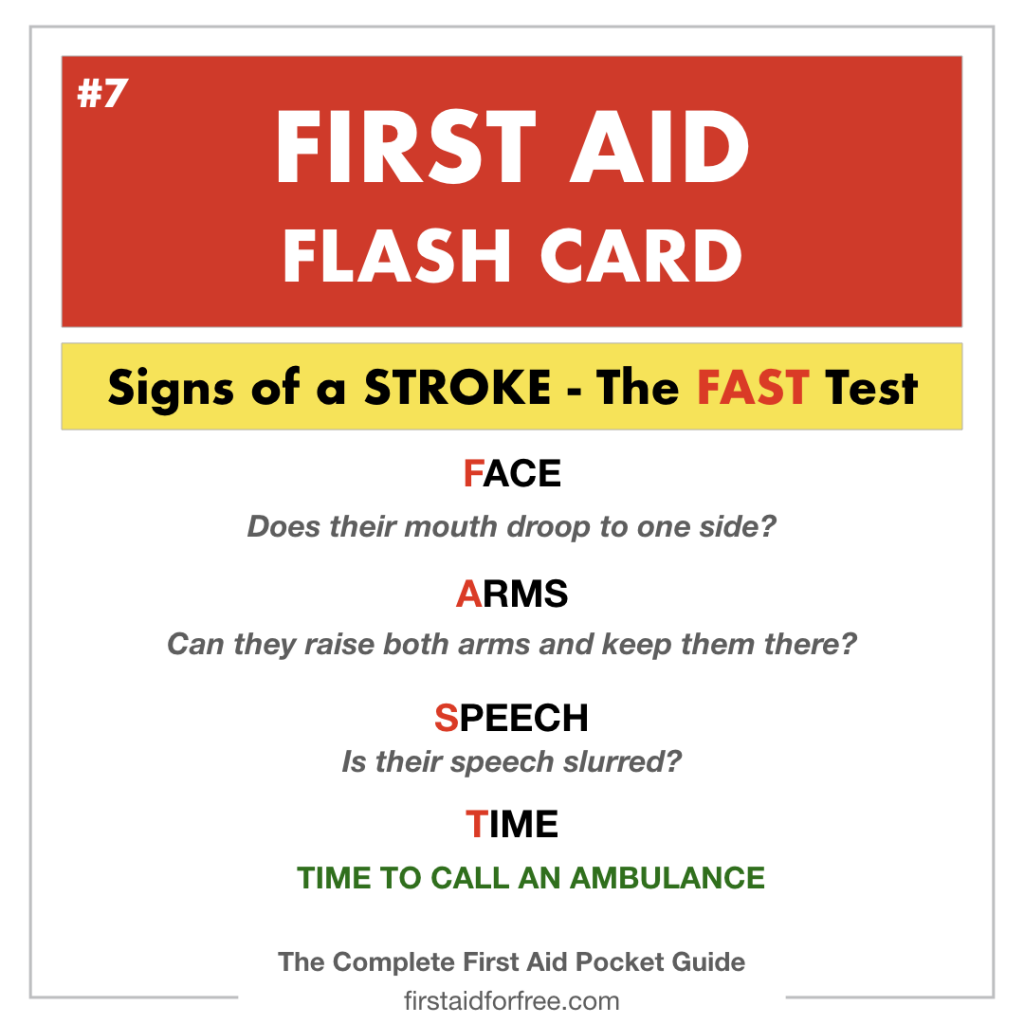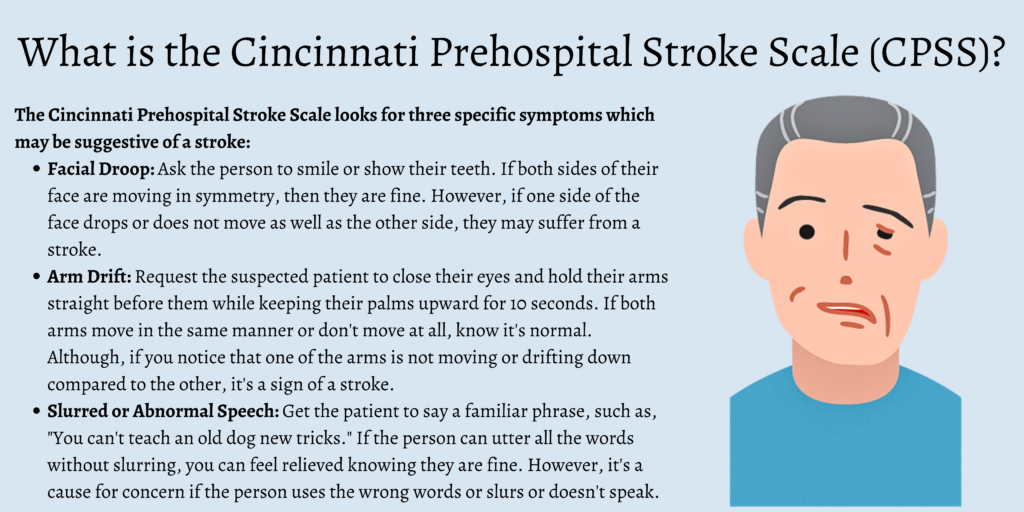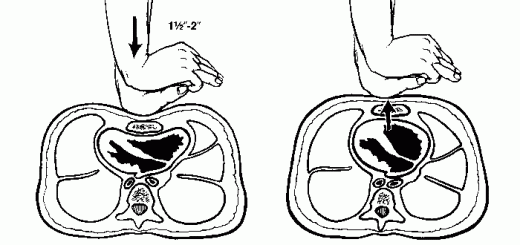What is the Cincinnati Prehospital Stroke Scale (CPSS)?
A stroke (also known as a brain attack) is a medical emergency that occurs when the blood supply to the brain becomes disrupted. Most strokes occur due to a blood clot blocking one of the arteries in the brain. The brain cells become starved of blood and eventually die leading to catastrophic consequences.
Emergency treatment of a stroke may involve breaking up the blood clot by giving medication, or by mechanically removing the clot. This treatment needs to be started as soon as possible in order for the best chance of recovery.
Recognizing a stroke is occurring is vital to ensure emergency treatment can be given as soon as possible. The Cincinnati Prehospital Stroke Scale (CPSS) is a tool used by first responders in order to assess patients for a suspected stroke.
The Cincinnati Prehospital Stroke Scale looks for three specific symptoms which may be suggestive of a stroke:
- Facial droop
- Arm drift
- Slurred or abnormal speech
Facial Droop
A stroke can lead to facial drooping and weaken the patient’s muscles, affecting the mouth, lips, and eyes on one side of the face or both sides. Usually, the lower part of one side of the face bears the effects.
Although, if someone suffers a stroke in the brainstem, the stroke could affect the forehead. Facial drooping often occurs when the nerves in your face get damaged, or there’s damage in the part of one’s brain responsible for sending nerve signals to the facial muscles.
Ask the person to smile or show their teeth. If both sides of their face are moving in symmetry, then they are fine. However, if one side of the face drops or does not move as well as the other side, they may suffer from a stroke.
Arm Drift
An arm drift in the case of a stroke refers to your arms feeling numb or paralyzed. This sort of paralysis or numbness sets in suddenly and affects one side of the patient’s body.
Request the suspected patient to close their eyes and hold their arms straight before them while keeping their palms upward for 10 seconds. If both arms move in the same manner or don’t move at all, know it’s normal. Although, if you notice that one of the arms is not moving or drifting down compared to the other, it’s a sign of a stroke.
Speech
A person displaying abnormal speech is related to a left hemisphere stroke. Since the left hemisphere of the brain is the location of the language center, a patient’s speech gets affected when they are having a stroke.
It can lead to aphasia when a stroke survivor’s ability to understand what others are trying to say gets affected. Aphasia also harms their ability to speak and communicate normally.
Get the patient to say a familiar phrase, such as, “You can’t teach an old dog new tricks.” If the person can utter all the words without slurring, you can feel relieved knowing they are fine.
However, it’s a cause for concern if the person uses the wrong words or slurs or doesn’t speak.
Interpretation of the CPSS
If any of the features above are present (facial droop, arm drift or abnormal speech) then a stroke should be suspected. Emergency medical help should be called for as soon as possible and the patient transferred to a stroke center.
The CPSS is very similar to the FAST test which looks for facial droop, arm weakness and slurred speech.

Conclusion
The Cincinnati Prehospital Stroke Scale system came about in 1997 and was developed from the National Institutes of Health Stroke Scale.After being created by the University of Cincinnati Medical Center, it became a crucial go-to method for first aiders to help someone who could potentially be suffering from a stroke. As first responders, it’s imperative to know about it to aid someone displaying the signs of a stroke.






